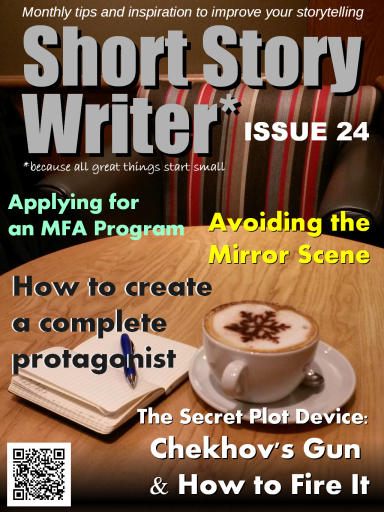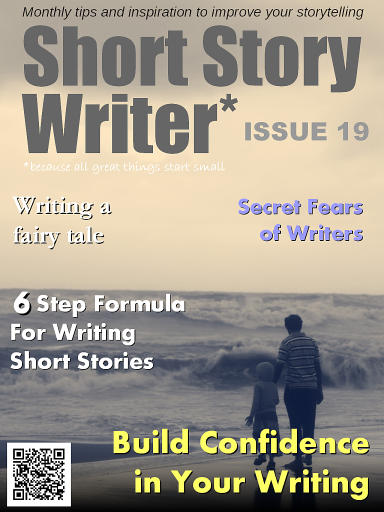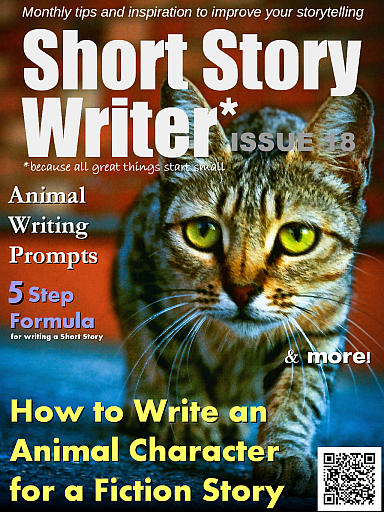By Samantha Priestly
Because a short story is told on a small canvas with little room to run, it’s important you set your scene and create fully rounded, believable characters to work with.
You might already know where you want your story to take place, in which case all you have to do is keep your characters firmly rooted in that setting and allow them to live there. If this is a place you know well, you shouldn’t have any trouble describing the streets, the buildings, or what the landscape looks like. If you’ve decided to set your story in a place you’ve never been or doesn’t exist, you’re going to have to either do your research or create a whole new setting from scratch.
To do the latter you need to make a note of exactly what this place looks like, what it’s like to live there, and what happens there down to the smallest detail. Think about the things your characters will come into contact with as they live out this story. You should be able to envisage the story as if it’s a film. Your readers need to be able to see exactly what you see, so you’re going to have to describe it to them.
If you’re setting your story in the past, again you need to do your research. You need to know how different a certain place looked 20, 30, 100 or a 500 years ago. How did people who lived there dress? How did they speak? And what did they do for a living? In some ways researching places from the past actually makes your job easier because you have the information you need already written down. You have a map in a way. All you have to do is place your characters in this world and let them live out your story there.
Whichever setting you choose, you need to describe it. Your readers should feel as if they are there along with your characters. The way to do this effectively isn’t to spend whole paragraphs writing in detail about everything around the characters, but to write it in along with the action.
Example –
This is from a short story I wrote a few years ago that was runner up in The Pages competition and published in The Binnacle.
‘From the kitchen window Denise can see the bottom step that leads up to the patio outside. When she first saw this she felt as if her chest was dissolving under her skin. In the concrete, just below the step, there is the imprint of a child’s hand.’
Here I’ve described the kind of environment Denise lives in. Obviously throughout the story there’s more detail, but for now, let’s look at these 3 simple sentences. What do we know?
We know Denise is standing in a kitchen. It feels as if this isn’t her house because she says ‘when she first saw this’, it is actually the house she is soon to move into. All that is told in other parts of the story. We know that there’s a patio outside and that there’s the handprint of a child in the concrete. We also know how she feels.
In just three sentences we know the environment Denise is living in and how she feels about it.
Example –
This is from a short story I wrote for the launch of the Penny Shorts website, called Going Underground. Most of the story is set in the London Underground, but when my main character thinks back over how she got to where she is and what her life used to be like, I needed to show the difference in the two world’s she’d lived in. Here I describe the town she used to live in, giving the reader a direct contrast with where she now lives in London.
‘The town centre held a market in its square every Tuesday and Thursday. The stalls were weighed down with fruit and vegetables, garden tools, crockery and plants and flowers. The traders called out the names of things they sold to passers by, even though everyone here knew what was on offer. Everyone here had grown up with the same stalls with the same people behind them, or else their kids and then their kids after them. No one here changed. No one here ever thought of changing.’
Again, what do we know?
From this short paragraph we know that our character came from a small town. We can envisage the town square market, imagine walking around the stalls. We can see what was being sold and what kind of people lived here. We know this is a tightknit community because everyone knows what’s being sold. It’s the same every week. The same people have lived here all their lives and all know each other.
You can do exactly the same thing with imaged settings and historical settings. As mentioned before sometimes writing historical settings can be easier, but you have to make sure you have some grounding for every detail you mention. Someone, somewhere will soon pick you up on it if you get this wrong.
Setting can sometimes be more important then, or as important as, the character. Sometimes, setting can even become a character. My second chapbook, Orange Balloon (August 2016) features a man who wanders the UK in search of something he’s lost. My publisher at Folded Word are very keen on stories having a sense of place, so I knew setting would be extremely important. Because of this, I found my settings were as important as my character, and describing them was as important as describing how my character feels and what he’s doing.
‘It started on The Hungerford Bridge. This bridge always reminded Chris of a ship. Depending on where you stood and the angle at which you looked upwards, each pylon appeared as a ship’s mast. He could feel the movement of the water beneath and all around and he imagined sails attached high above his head.’
This is the opening paragraph of Orange Balloon. It puts us straight on the bridge with Chris. If you’ve been and stood on the Hungerford Bridge before you’ll recognise it instantly and be able to imagine our character standing there. If you haven’t, you should still be able to imagine it.
This is how important, and how powerful, your setting is. It lands your readers in your world. They should be able to look around from where they stand and see everything your character sees. And they should do all this while simultaneously building an idea of who your character is and what they are doing there, and how they feel. These things shouldn’t be explained separately. They don’t have their own set places in story. These things should all be unfolded and shown as you tell your story.
This is especially the case when writing short stories. The principle is the same in novels, except in a novel you do have the time and the space to spend a paragraph or two talking about the setting and what your character can see and experience. In a short story time is very much of the essence and these paragraphs that are description heavy can bog your story down too much.
Show the world your characters live in while telling the story, ground them, and bring your setting and your story to life.
~*~
About Samantha Priestly

Samantha is a full time writer based in Sheffield. Her first novel, Despite Losing it on Finkle Street, was published by Pioneer Readers. Her short stories have been short listed in The Sid Chaplin competition, The Pages competition, The Mike Hayward competition, The Ted Walters competition, The Glass Woman Prize and The Binnacle
Ultra Short at The University of Maine at Machias. She won first prize in The H E Bates competition and The Tacchi-Morris Arts Centre Prize. Her first single story chapbook, Dreamers, is published by Folded Word and the follow up, Orange Balloon, will be published in August 2016. Her second novel, Reliability of Rope, is published by Armley Press.
Writing courses, including Writing Short Stories, at http://www.writingtimes.co.uk/sam-priestley
 Short Story Writer* *because all great things start small
Short Story Writer* *because all great things start small









